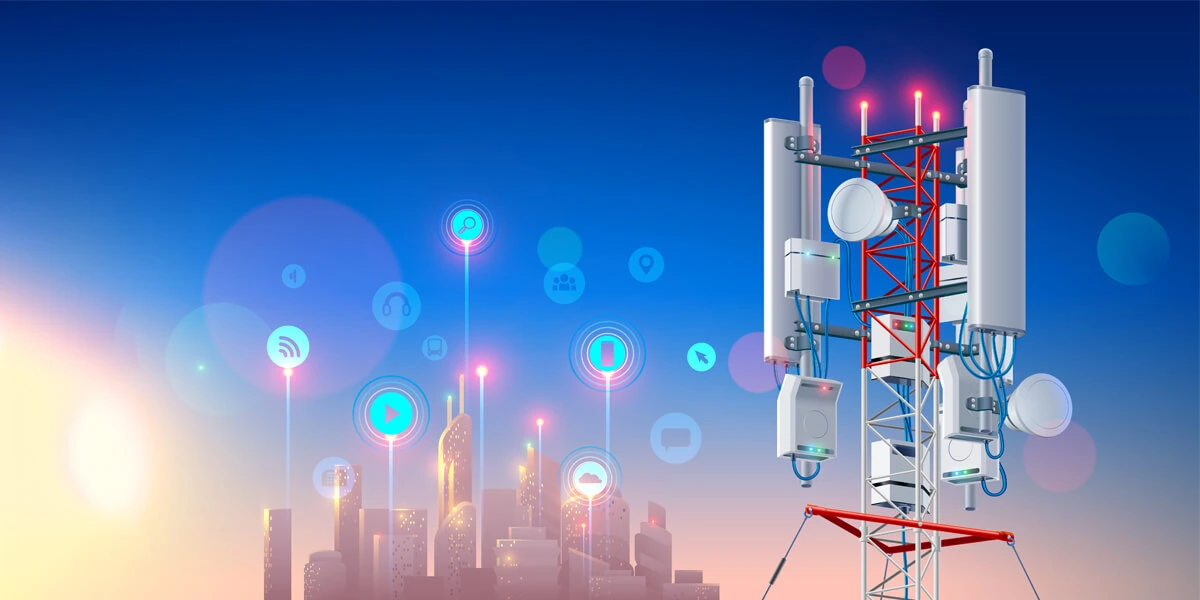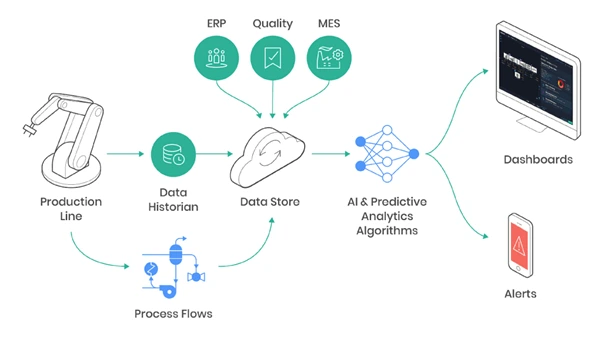The future of applied AI in the TMT industry

AI has been proving itself increasingly instrumental to the digital transformation strategy employed by telecoms today. Through the use of AI-powered platforms that combine multi-source data with real-time advanced analytics, TMTs are creating hyper-personalized customer interactions and differentiating themselves from their competition.
According to recent research, the global AI in telecommunication market size is projected to reach USD 14.99 bn by 2027, from USD 11.89 bn in 2020, at a CAGR of 42.6% during 2021-2027.
For industry players eager to ace the race, we’ve rounded the top application areas telecom businesses can consider to redefine and claim their market share as technology-enabled frontrunners.
Predictive maintenance
Through the use of data, ML techniques, and complex algorithms, AI-driven predictive analytics is assisting brands in providing better services by predicting future operational outcomes based on prior data. This implies that telecom operators can monitor the condition of their equipment and foresee loss based on patterns using data-driven insights.
Using AI in telecommunication enables CSPs (Communications Service Providers) to proactively resolve issues with communication hardware, including set-top boxes in customers’ homes as well as power lines, cell towers, and data center servers.

For short-term instances, root cause analysis and issue prediction can help improve network automation and intelligence. In the long term, these technologies will support more strategic objectives including developing novel consumer experiences and effectively addressing changing company requirements.
Network optimization
Beginning in 2019, 5G networks are expected to serve over 1.7 billion customers worldwide by 2025, accounting for 20% of all connections. Building self-optimizing networks (SONs) for CSPs to enable this expansion requires AI. These enable network administrators to automatically improve network quality depending on geographic and time zone-specific traffic data.
Digitalized customer services
Only 4% of emails and conversations are presently handled entirely by chatbots, while 20% of chats and 5% of emails are handled by AI with human assistance, according to a survey conducted by Salesforce Research in the UK. For major TMT organizations that oversee 100k+ interactions per week, this poses a huge cost opportunity.

For example, Ericsson, one of the leading telecom brands optimizes AI to digitize customer experiences with a vision to upsell and cross-sell new products. According to studies, omnichannel cloud communication – the technology that aggregates video, voice, messaging, etc. into one platform, combined with AI technologies can cut expenses by up to 20%.
Real-time hyper-personalization
Organizations will be able to exploit the full potential of AI and actively engage with thousands of clients on a one-to-one basis thanks to the petabytes of data created by a variety of interconnected platforms, devices, and sensors (social media, websites, OTT platforms, IoT devices, etc.).
Businesses can anticipate a 4–10X increase in engagement over current solutions due to the invention and implementation of easy-to-interpret deep learning models (like TabNet) and Cloud systems (such as serverless, parallel processing, streaming, and TPUs).
Such systems can be directly applied to advanced AR and VR technology to drive customizability and deliver individualized experiences across gaming, music, content viewing (sports, movies), online shopping, etc. with tangibly low 5G latency. At the time of writing this piece, Amazon’s customized home page is the best example of real-time hyper-personalization.
AI-powered cybersecurity
For TMT companies, cybersecurity and copyright piracy have proven to be a true challenge. The coronavirus pandemic saw US piracy rates soar by more than 40%. In 2020 alone, the average cost of a malware assault on a telecom company was approximately $900,000.
According to the latest research, Deep Reinforcement Learning (DRL) security techniques are proposed as applications to enhance autonomous intrusion detections, cyber-physical systems, and multi-agent game-theoretic simulators of defense strategies.
Without any manual assistance, software tools powered by these AI solutions and linked over low latency networks will now be able to react to important events, security issues, etc., and act on network modifications, address patching, and address predictive governance in real time.






